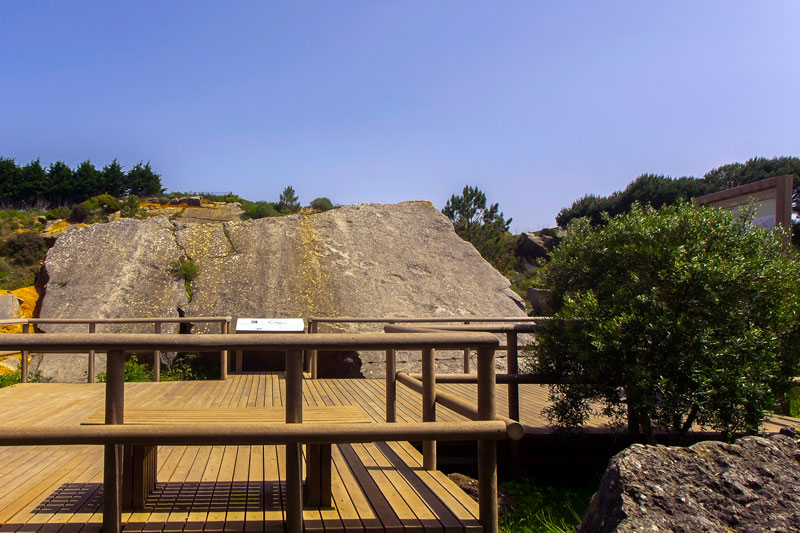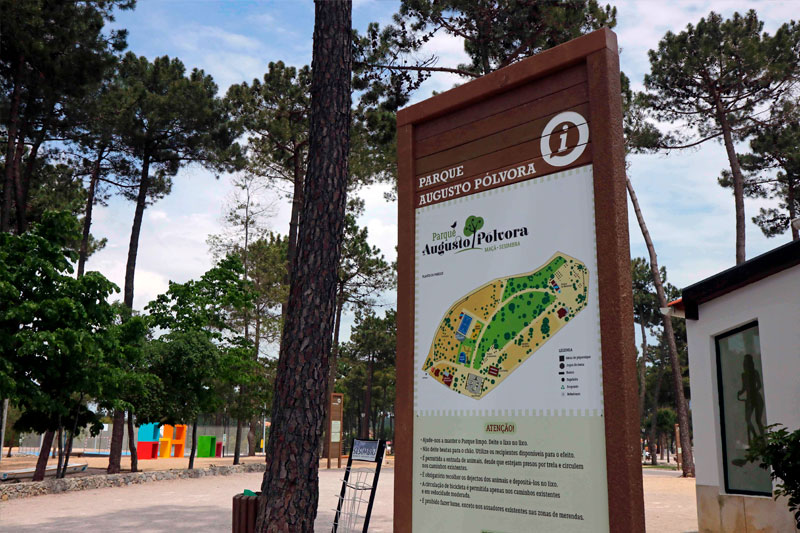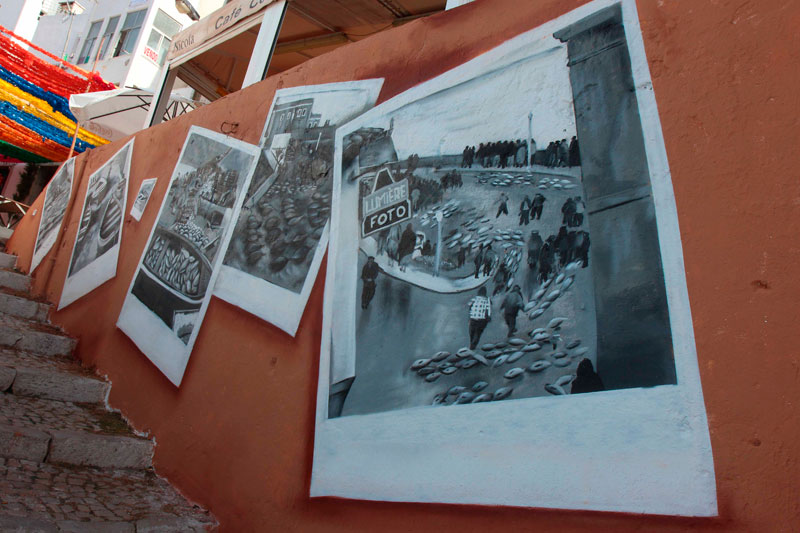Schedule
- July 13 to August 19: from 2.30 p.m. to 9 p.m. and from 9 p.m. to 11 p.m.
- August 20 to July 2: from 9 a.m. to 12:30 p.m. and from 2 p.m. to 5.30 p.m.
Others Information
- Address: Rua Cândido dos Reis, 17 2970-724 Sesimbra
- Phone: 21 014 92 24 / 21 014 94 61
- Email: museu@cm-sesimbra.pt
- Ticket Price: 1€
Chapel of Espírito Santo dos Mareantes
Built in the fifteenth century by the seafaring and fishermen's corporation of Sesimbra, the Chapel of the Holy Spirit was used initially as both a chapel and a hospital. In 1755, the earthquake caused considerable damage to the building, which remained closed until the middle of the twentieth century, when it reopened as a Municipal Library.
In the 70's excavations revealed the structures of the old hospital, drawings of old ships on the walls, coins, clay pipes, among other objects, which prompted its total recovery in the beginning of the 21st century .
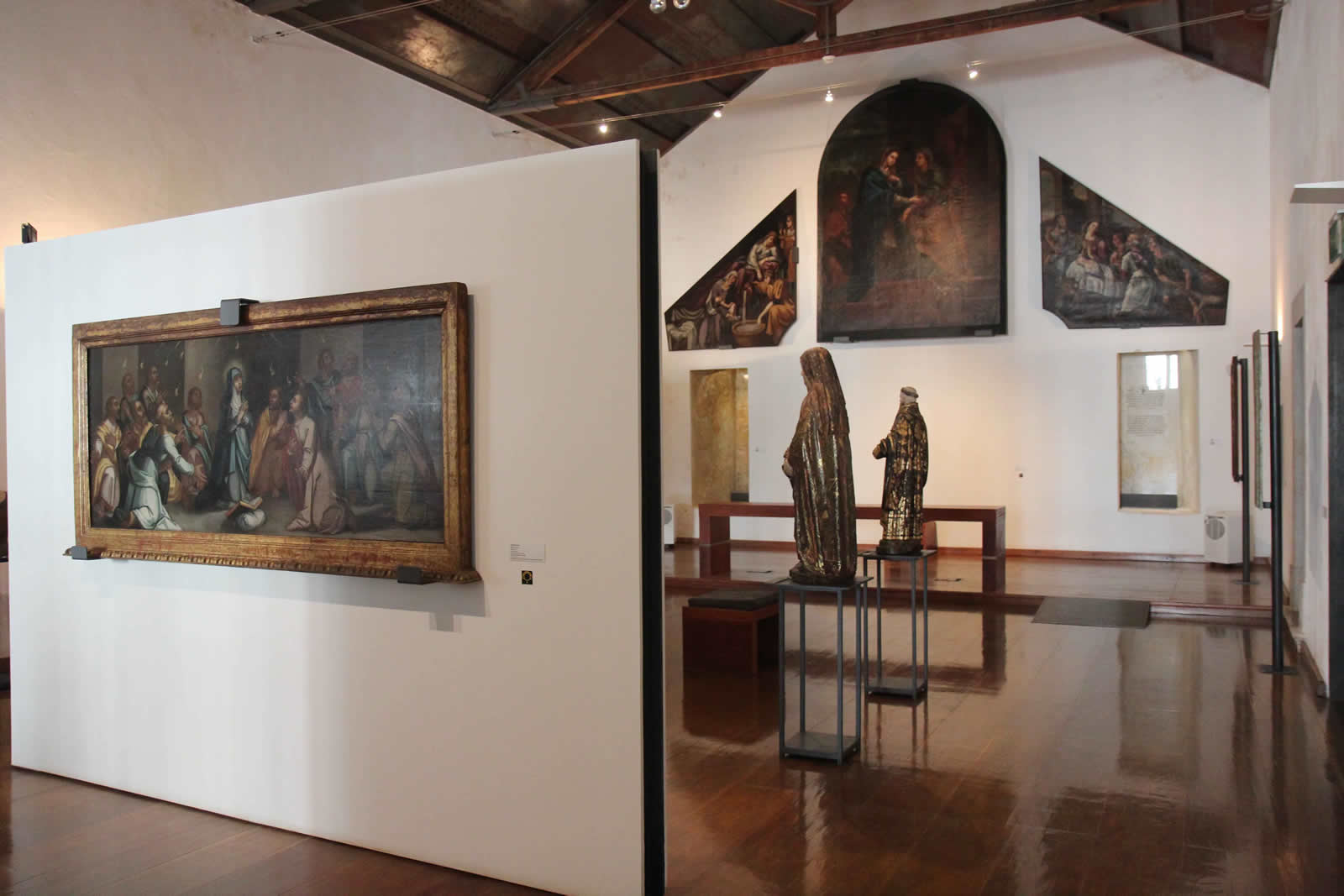
After the work carried out by the City Council, in partnership with the Directorate General of National Monuments and Buildings, the Chapel was inaugurated in 2004 as a museum center, which houses a valuable collection of sacred art with paintings and sculptures, among which stands out the painting of Nossa Senhora da Misericórdia (Our Lady of Mercy), accredited to sixteenth-century Gregorio Lopes, which underwent conservation and restoration work between 2014 and 2015, together with the museological reconstitution of the old hospital.
There are, therefore, good reasons to visit and learn more about this important museum.
Medieval Hospital
In the 70's, the Chapel underwent excavations that revealed the structures of the old medieval hospital. In addition to coins, clay pipes, among other objects, drawings of old vessels sketched in black on the stucco of the walls were discovered, testimonies of great historical and archaeological value. All these findings prompted the total recovery of the building in the beginning of the 21st century, making it one of the best preserved in Europe.
.jpg)
Our Lady of Mercy
Created in the first half of the sixteenth century and accredited to the painter Gregório Lopes, this painting is an important specimen of national art and represents a heyday period that also marked the municipality. The composition shows a rich polychromy, with Our Lady of Mercy appearing in the center on a column resting on the Eucharistic virtues, holding under its cloak the various sectors of the spiritual and secular sixteenth century society.
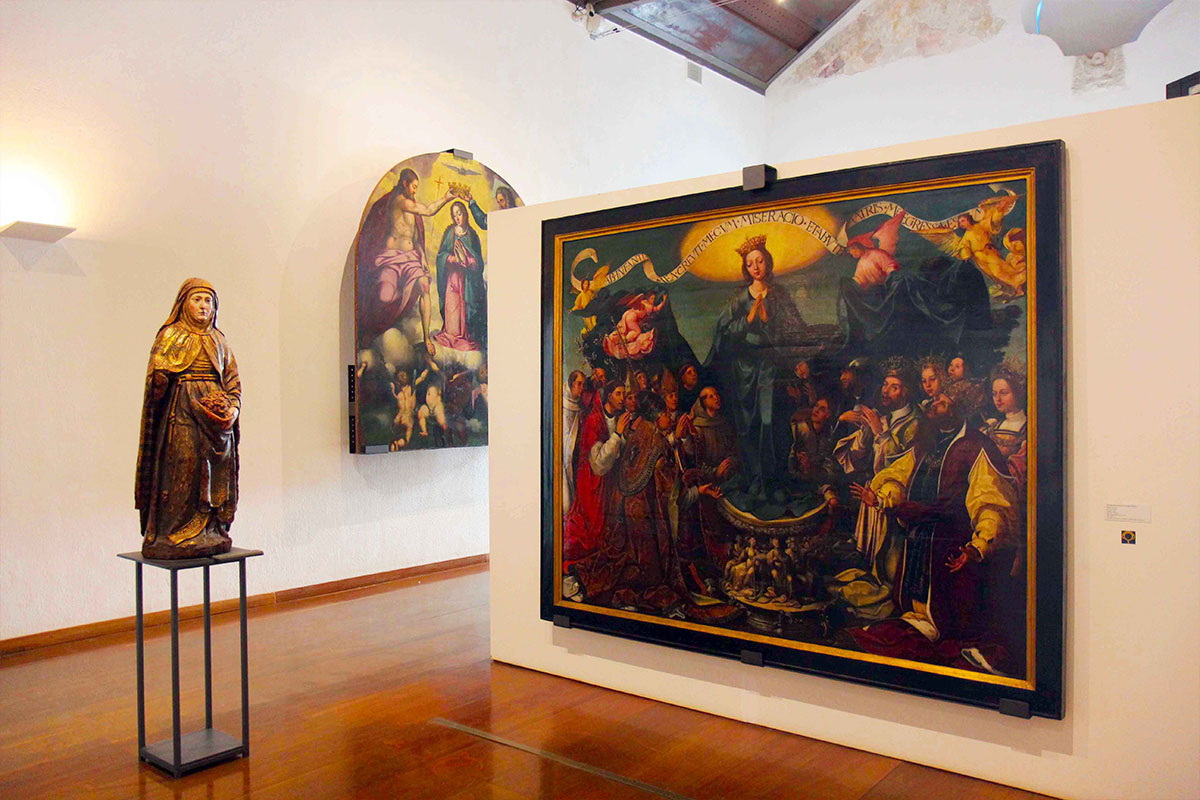
Saint Sebastian
Gothic style sculpture dating back to the 15th century. It was on display in a small chapel for devotion to this saint, protector against pests and patron of the military, abandoned after the eighteenth century. It is an image with a delicate anatomy and a full head of hair wrapping the face of a teenager. It has rosy flesh and a small closed mouth, revealing on the torso and legs, ten holes where silver arrows are lodged.
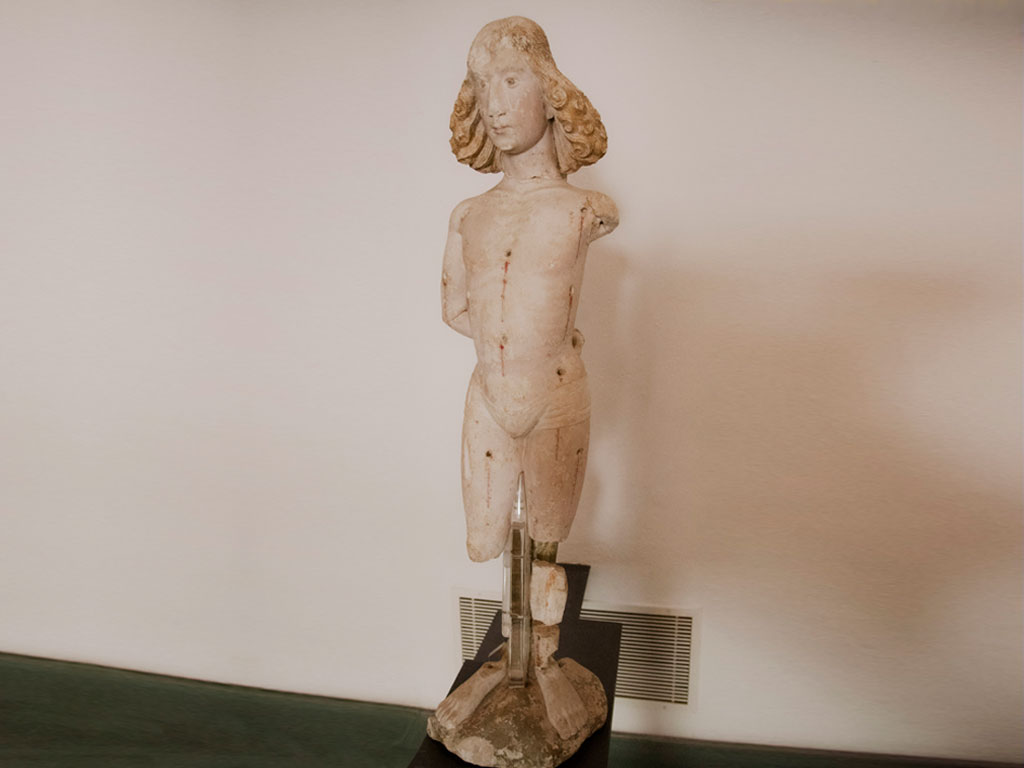
Coronation of the Virgin
Oil painting on canvas painted between 1615-1619 by the Portuguese school. It is accredited to Amaro do Vale, who will have projected it for a church in Lisbon. It was brought, however, in 1878-1879 to the church of Nossa Senhora da Consolação do Castelo (Our Lady of Consolation of the Castle). The Italian influence is noticeable with the panel centered on the image of the Virgin surrounded by the three figures of the Holy Trinity, the Father, the Son and the Holy Spirit, over a lower plane of delicate angels.
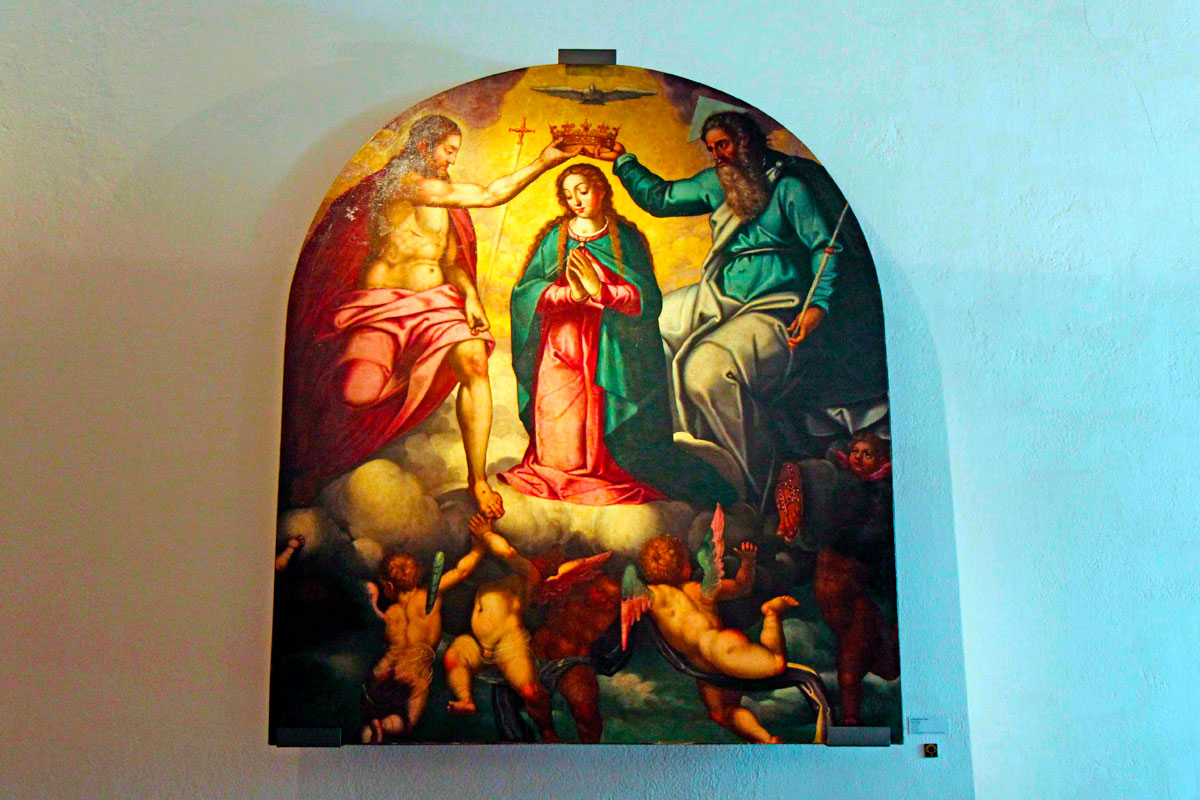
Independent visit
Sacred art exhibition between 10m. to 15m .; Medieval hospital about 10m.
Guided visit
Visit Plan
-
1
Welcome, introduction and historical context of the building.
-
2
Visit to the sacred art exhibition focusing on some of the most important works, namely Gregório Lopes, Masters of Lourinhã, Diogo Pires "o Velho", Amaro do Vale and the works of Francisco Henriques and Geraldo Fernandes do Prado.
-
3
Visit to the Medieval Hospital starting at the south wing by contextualizing the aid provided by medieval hospitals, hospices and the Brotherhood of the Holy Spirit of Sesimbra; organization of the various hospital specialities and operations with reference to the entrances, chimneys and graffiti room; possible reference to the coin collection.
-
4
Sleeping quarters and beginning of the visit to the archeology exhibition.
-
5
Accommodation of the brothers and continuation of the visit to the archeology exhibition.
-
6
End of the visit with time for questions.
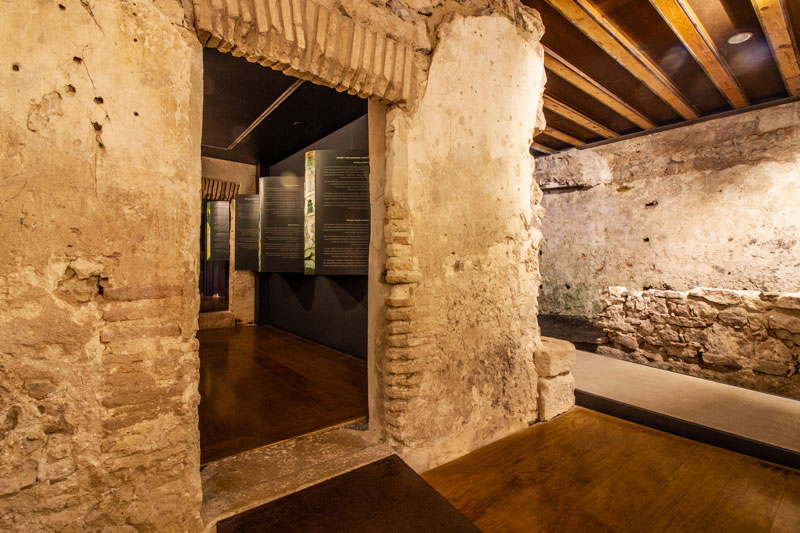
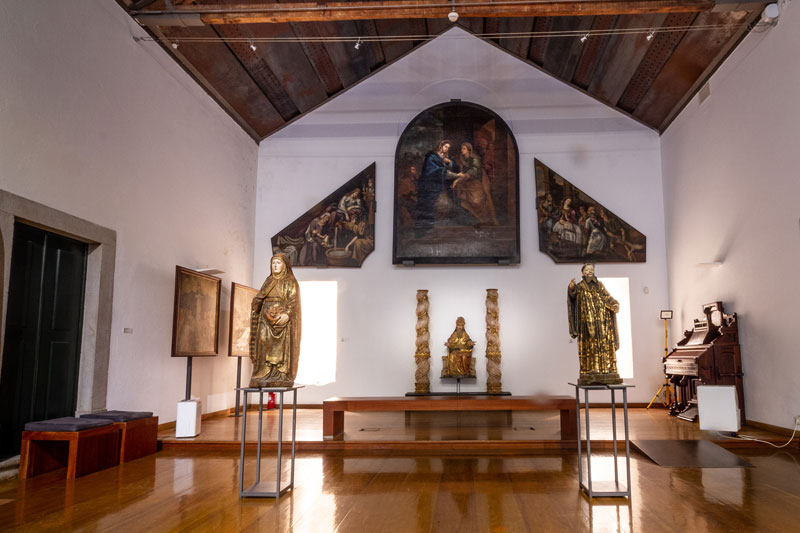
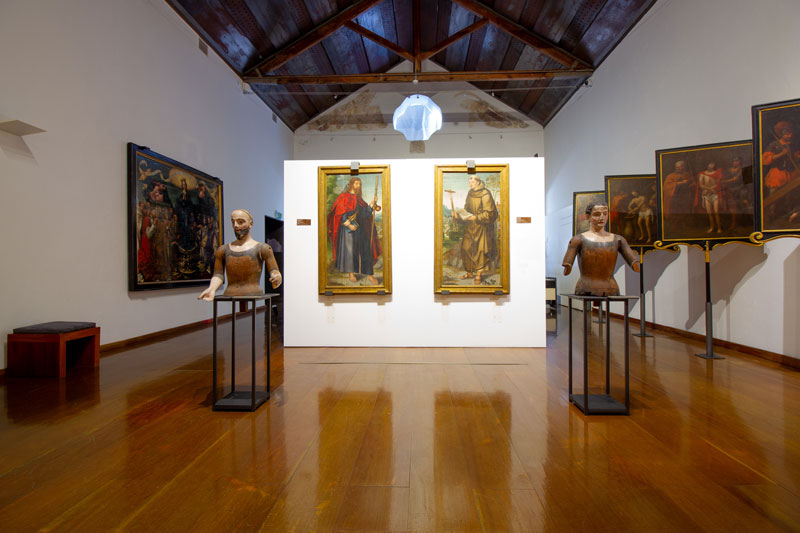

.jpg)
_(1)1.jpg)
